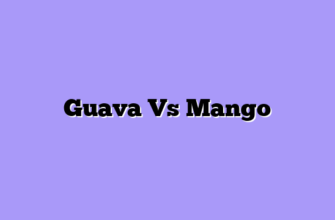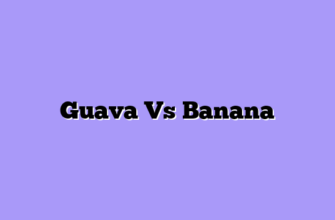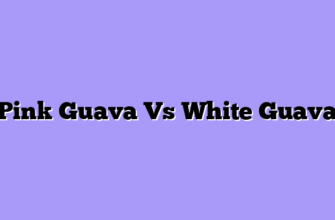After fifteen years of growing guavas (Psidium guajava), I’ve become something of a connoisseur of these aromatic fruits. People often ask me, “Anna, what’s the best-tasting guava?” Well, that’s like asking a parent to choose their favorite child! Each variety of this remarkable fruit, known as bayabas in the Philippines or peegwah in the Caribbean, has its own unique charm. Today, I’m going to take you on a flavorful journey through what I consider to be the cream of the crop.
The Sweet Symphony of Pink Varieties
Let me tell you about my first encounter with the Thai Pink guava. I was at an agricultural conference in Bangkok when someone handed me what looked like a perfectly ordinary apple guava (one of the common names for this fruit). But when I cut it open, the vibrant pink flesh literally made me gasp. The flavor? Imagine the sweetest strawberry you’ve ever tasted, mixed with hints of rose petals and tropical punch. It was a game-changer for my farm.
Thai Pink Characteristics:
- Flesh Color: Deep pink to red
- Sugar Content: Very high (14-16 Brix)
- Texture: Creamy, minimal seeds
- Aroma: Strong floral notes
Then there’s the Mexican Pink Cream guava, which I consider the hidden gem of my orchard. While not as visually striking as the Thai variety, its flavor profile is something special. The flesh has a custard-like consistency that makes it perfect for both fresh eating and processing. When fully ripe, it develops complex flavor notes that remind me of vanilla ice cream with a tropical twist.
The fascinating thing about pink varieties is how their flavor evolves as they ripen. It’s like watching a symphony build to its crescendo – each day brings new notes and subtle changes in the flavor profile. I’ve learned to pick them at different stages depending on their intended use.
The White-Fleshed Wonders
Now, let’s talk about what I call the “heritage varieties” – the traditional white-fleshed guavas that started my love affair with this fruit. The Indonesian White, known locally as jambu batu, might not look as exotic as its pink cousins, but don’t let that fool you. These fruits have a honey-like sweetness that’s perfectly balanced with a subtle tartness.
My personal favorite in this category is the Vietnamese Long guava. Picture a fruit shaped like a pear, with flesh as white as snow and a fragrance that can perfume an entire room. When perfectly ripe, it has what I call the “triple threat” – sweetness, complexity, and that distinctive guava aroma that makes your mouth water.
Vietnamese Long Characteristics:
- Flesh Color: Pure white
- Sugar Content: Medium-high (12-14 Brix)
- Texture: Crisp, moderate seeds
- Aroma: Intense tropical notes
The Exotic Contenders
Let’s venture into some less common territory. The Strawberry guava (Psidium cattleyanum), while technically a different species, deserves a mention in any discussion of best-tasting guavas. These small, burgundy-colored fruits pack more flavor into their tiny package than many fruits twice their size. Think of them as the espresso shots of the guava world – small but intensely flavored.
Then there’s the Red Malaysian guava, a variety that I discovered purely by chance through a traveling botanist. This variety combines the best of both worlds – the sweet intensity of pink guavas with the complex flavor profile of white varieties. It’s like nature decided to create the perfect hybrid.
Red Malaysian Characteristics:
- Flesh Color: Pink-red with white margins
- Sugar Content: Very high (15-17 Brix)
- Texture: Firm but tender
- Aroma: Complex tropical bouquet
Factors Affecting Taste
Here’s something most people don’t realize: the same guava variety can taste completely different depending on growing conditions. It’s like wine – terroir matters! The soil composition, amount of sunlight, and even the spacing between trees can affect the flavor development.

The ripening process is also crucial. A perfectly ripe common guava (or yellow guava, as some call it) should yield slightly to pressure and fill the air with its characteristic aroma. But here’s the trick – different varieties have different ripening patterns. Some are best eaten while still firm, while others need to soften considerably to develop their full flavor profile.
Making Your Choice
After all these years of growing and tasting different guava varieties, I’ve learned that the “best” taste is largely personal. Some of my customers swear by the intense sweetness of pink varieties, while others prefer the more complex, subtle flavors of white-fleshed types.
If you’re new to guavas, I usually recommend starting with the Thai Pink or Indonesian White varieties. They’re like the gateway fruits into the wonderful world of guavas – consistently good and readily available. Once you’ve developed a taste for these, you can explore some of the more exotic varieties.
Remember: The best-tasting guava is often the one that’s perfectly ripe and freshly picked from the tree. No amount of breeding or variety selection can beat the simple pleasure of eating a sun-warmed guava straight from the branch. Each variety has its own charm, and part of the joy is discovering which one speaks to your taste buds.








